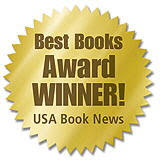Virtually every object used in building your home and the objects within it—the insulation in your house, your sofa, food storage containers, floor cleaners and even fabric softener—impacts both your health and the health of the planet.
You may be shocked to discover that many seemingly harmless household products contain dangerous chemicals. However, most of these products can be easily removed and replaced and some will lose their toxicity over time, so you needn’t panic and think everything in your house must be replaced.
Indoor pollution greatly increased after the end of World War II, with mass-produced housing. These new houses were made with new, lightweight materials, materials that were produced by the petrochemical industry. These products, made from petrochemicals, release chemicals into the air—through a process known as outgassing. Outgassing is the slow release from the material of chemical residues used in the manufacturing process into the atmosphere. They include VOC’s and many other petrochemical derivatives. Materials made from petrochemicals include plywood, particleboard, carpeting, vinyl flooring, adhesives, paints, fabrics and much more.
Petrochemicals
The biggest source of pollution comes from the use of petrochemicals, which causes both environmental damage and damage to the earth’s inhabitants. A non-renewable resource, the use of petrochemicals is so pervasive in our lives that the removal of them overnight would result in an unrecognizable world. Petrochemicals heat our homes and transport people and products. Plastic products are derived from petrochemicals. Many cleaning supplies, paint, clothing, furniture, building materials, packaging materials, toys, carpeting, appliances, automobiles, planes, trucks, makeup, grooming products, soap, detergent and pesticides contain petrochemicals and require the use of them during the manufacturing process.
Guidelines for Eco-friendly and Healthful Purchasing Choices:
Do:
· Replace products that are made from petrochemicals with products that are made with natural, non-hazardous and preferably renewable products. For example, use bamboo flooring that is finished with natural wax and tung or linseed oil; and purchase natural paints, lime plasters and cork floors.
· Purchase raw materials near production sites to save on transportation expense and fuel waste.
· Purchase materials that were processed using renewable energy.
· Extend product life by reuse and recycling of components.
· Recycle waste to become ingredients in other products. Called “biomimicry,” these are manufacturing processes that take one product and turn it into something else. For example: carpets that are made from recycled plastic bottles, paints that are made from vegetable extracts, tiles that are made from ceramic waste and rubber flooring that is made from recycled tires.
· Support companies that employ safe and clean methods to produce products or that use recycled products.
· Support companies that sell healthy, organic, sustainable products.
The following products are toxic and cause pollution and should be avoided when possible:
· Most commercial cleaning products and other household chemicals
· Garden pesticides
· Carpets glued with solvents, treated with fungicides and containing residual pesticides
· Fabrics treated with chlorine, benzene and/or formaldehyde
· Most plywood and particleboard, which contain formaldehyde, urea and other dangerous glues
· Many paints and stains, which contain fungicides, VOC’s and other chemicals
· Vinyl flooring, furniture and plastics that contain VOC’s such as bromides and chlorine
· Dry cleaning and dry cleaning solvents
Eco-Friendly Cleaning Products
While the dangers of the most commonly used individual chemicals have been documented, there have been few attempts to study the effects of combining one or more chemicals.
Fortunately, there are many non-toxic, natural cleaning products that are on the market or you can make your own. For example, use baking soda and distilled white vinegar: Combine when ready to use—mixing creates a science-project like foam. This mix cleans all kinds of things, including:
- Stubborn stains (let sit, then rinse)
- Stainless steel
- Water fountains
- Silver
- Brass
- Stained glass
There are a number of natural cleaning products that you can purchase at natural food stores or online. In your grocery store, Bon Ami is all natural and works especially well on stainless steel and borax is a natural laundry booster and multi-purpose household cleaner.
Greener Choices for Your Home
- Purchase refurbished furniture and building materials when possible.
- Buy items secondhand.
- Purchase products made from sustainable woods and grasses, such as bamboo.
- Look for natural, not synthetic products.
- Buy the best quality that you can afford so that items will not have to be replaced often—or ever.
- Purchase only what you need.
- Buy locally harvested or manufactured products and save on transportation costs.
- Recycle whenever possible.
- Revamp. For example, buy good quality throw-pillow inserts and replace the covers, when they become worn or you tire of them, instead of the entire pillow.
- Look for eco-labeling on products that you buy.
Finding good products for your body, home and planet is easier than ever! You will discover how deeply satisfying it is to clean your home of toxic and unsafe products and to replace them with safe and healthy alternatives that are good for you and the planet.
For more information, go to: Harmonious Environment:Beautify, Detoxify & Energize Your Life, Your Home & Your Planet.Technorati Tags:
biomimicry, dangerous chemicals, eco-friendly cleaning products, garden pesticides, indoor pollution, linseed oil, natural wax, outgassing, particleboard, renewable resources, toxic free homeAdd to: | Technorati | Digg | del.icio.us | Yahoo | BlinkList | Spurl | reddit | Furl |



